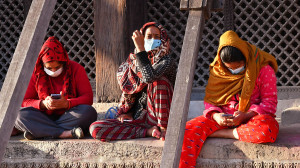National
KU mechanical engineering researchers develop prosthetic device manufacturing
They aim to make the medical devices affordable and tailored to the needs of patients with disabilities.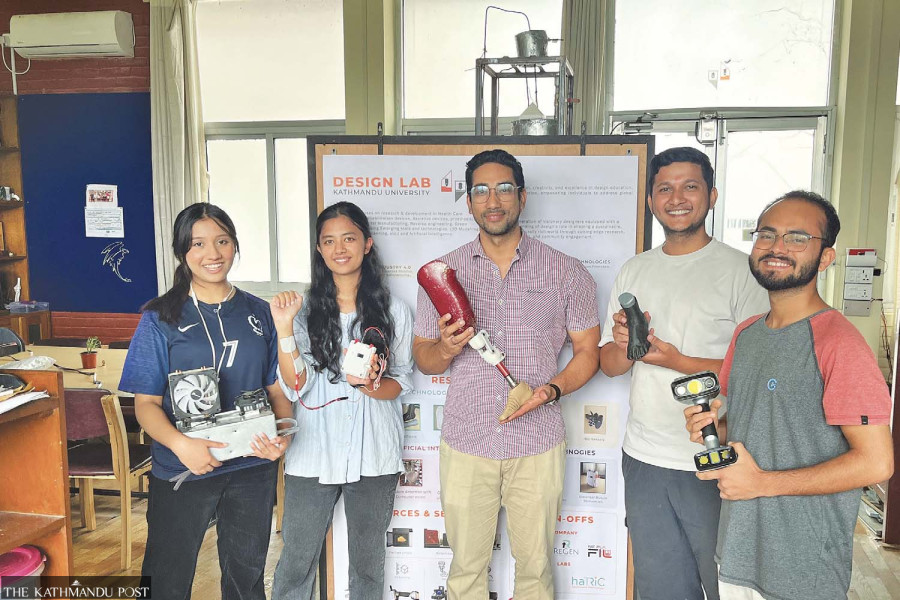
Ellie Davis
Inside the Spinal Injury Rehabilitation Centre in Kathmandu, there’s a dedicated wheelchair graveyard room. Hundreds of wheelchairs that once helped disabled patients get around now sit broken and unusable.
Most of the wheelchairs were donated by people from various parts of the world. When even the smallest piece of a wheelchair breaks, the machine becomes irreparable because each is a different brand or model.
The researchers at Design Lab—a Kathmandu University-based mechanical engineering lab led by Assistant Professor Pratisthit Lal Shrestha—are working to produce essential medical devices in Nepal for patients with disabilities.
They’re manufacturing from the ground up, breaking down the production steps for devices like knee joints for prosthetic legs. They’re doing this work on their own to make these devices more affordable and tailored to patient needs.
“We are trying to localise the manufacturing,” Shrestha said. “If we do that, then we can maintain [medical devices] and easily manufacture them.”
Dr Shrestha and his colleagues launched the design lab in 2019 to create a space where engineers could bring their ideas to life.
“We started Design Lab to create a space where people could convert their ideas into a product,” Shrestha said.
First, they needed the right tools. The researchers got an old 3D printer from another KU lab, and they’ve since added plastic filament-based, resin-based, and plastic powder-based 3D printers to the lab, as well as a 3D scanner to capture the shape of real-world objects. The powder-based 3D printer, which has the most accurate printing capabilities, is the only of its kind in Nepal, according to them.
The Design Lab collaborates with the KU School of Medical Science and other medical experts to learn how they can best help patients. So far, they have had no lack of ideas.
Doctors at the Hospital & Rehabilitation Centre for Disabled Children told Design Lab that their patients needed better, cheaper prosthetic devices.
As they grow, children who use prosthetic legs have to switch to a larger prosthetic twice a year. Most child patients opt for the cheapest option: prosthetic legs with single-access knee joints. But these prosthetic legs stay rigid at the knee when standing, making walking more laborious.
“It’s especially problematic for children, because it’s kind of traumatic for them,” Shrestha said. “People call them ‘langada’ [a derogatory word referring to those with mobility disabilities]. If we could give them a proper gait, it would be better.”
More advanced polycentric knee joints bend with each step like human knee joints, but these polycentric knee joints cost Rs50,000 to import.
To offer patients a better option, Design Lab took matters into its own hands. Using their 3D printers to manufacture the polycentric knee joints, they were able to bring costs down to around Rs20,000. If they scale up production, Shrestha believes they could make the prosthetics for five times less than the current imported prosthetics. They’ve made one prototype so far, and soon, the lab is planning on doing human trials with their design.
For patients whom the Design Lab has been able to help, the medical devices have transformed their lives.
One patient who lost his foot due to type 2 diabetes related nerve damage needed a prosthetic foot, but the Design Lab researchers weren’t happy with typical prosthetics. Most are rigid and don’t have any flexibility to mirror toes’ natural bend. The researchers wanted to help the patient walk with a more natural gait, so they designed a prosthetic foot that could bend at the toes.
The Design Lab took a 3D scan of the patient’s remaining foot and 3D printed a prosthetic to specifically fit the patient’s leg stump.
“It was so comfortable to him that he started wearing it full time,” Shrestha said.
Researchers at the Design Lab are never focusing on just one project. When they’re not building knees and feet, they’re working to improve the durability of silicon prosthetic liners that patients use to comfortably wear their prosthetics, or they’re experimenting with electromyographic sensors that can detect muscle movement to help create a functional prosthetic hand.
Meanwhile, other researchers are using electrodes to stimulate movement in the limbs of stroke survivors who have lost mobility, creating a cryotherapy machine for cold therapy, or manufacturing halo braces for children who have undergone brain surgery.
The potential impacts of the Design Lab’s work are far-reaching. In Nepal, 240,609 people live with a physical disability, according to 2021 census data. Though 64 percent of people in high-income countries have access to assistive products like prosthetics and wheelchairs, only 11 percent in low-income countries have access to them. Plenty of people with disabilities in Nepal live without any help from prosthetics or mobility-assisting devices, but those who do need mechanical help and can afford it have to pay exorbitantly to import the medical device they need.
Localising the production of healthcare devices also allows manufacturers to tailor the devices to local needs and daily use. As Dr Shrestha brought up, imported prosthetic legs are often not designed with the flexibility for their users to easily sit on the floor.
“There are activities of daily life that might not be addressed by the prosthetic knees that we import,” he said. “We are trying to consider the local needs, and then manufacture a device that can address those needs.”
Because the Design Lab has focused so much on healthcare, Dr Shrestha is hoping to launch a healthcare technology research and innovation centre as a spin-off of the Design Lab.
The lab’s work has also inspired a generation of innovators—former students of Dr Shrestha have gone on to launch three separate startups. Companies Nyanocare, which works in 3D printing, NeplaFil, which produces filament material for 3D printing, and ReGen Nepal, which converts plastic waste from 3D printing into furniture-building materials, all got their start at the Design Lab.
Seeing his students take their work beyond the Design Lab, rather than letting their thesis projects gather dust on his shelf, is always rewarding for Dr Shrestha. “I’ve tried to convince our students to go and open companies to continue the research that they do here,” he said.
The current students in the lab are proud to be working at the forefront of mechanical engineering in Nepal.
“We feel lucky to be a part of Design Lab,” third-year bachelor’s student and researcher Dilasha Adhikari said. “We can learn so much and be given the opportunity to work while we study.”
The desire to help patients in Nepal encourages the students to continue their experimentation and innovation, according to third-year bachelor’s student and researcher Arya Ghimire.
“We are making these devices in Nepal and reducing the cost while still making it more effective,” she said.




 16.12°C Kathmandu
16.12°C Kathmandu





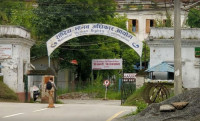




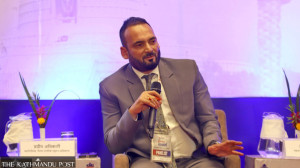

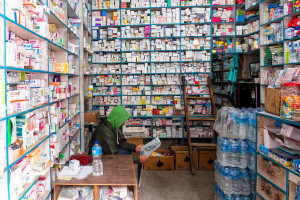
%20(1).jpg&w=300&height=200)

